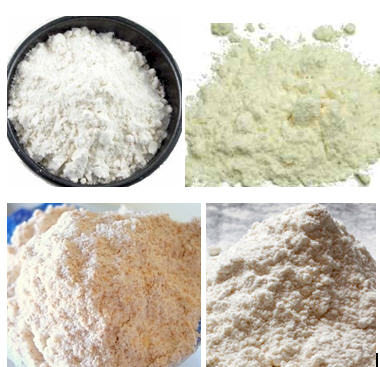Bake like a pro
Check freshness
Do a few freshness checks before you even look at a baking pan. You don’t want to discover expired or stale ingredients midway into your recipe.
Sniff your spices. Open the bottles – no aroma means no taste. Be sure to store spices away from heat, which weakens their potency and flavor. Buying from stores that sell spices in bulk so that you get only as much as you need. Or buy online for a variety of fresh spices and other ingredients.
Check expiration dates, especially with leavenings. Old yeast might not have the power to raise bread dough. And baking powder has a surprisingly short shelf life. Test its freshness by dissolving 1 teaspoon into one-third cup of water; if you don’t’ hear it frizz, buy a new package.
Make sure your brown sugar hasn’t turned rock solid. To keep it soft, store it in a ceramic brown-sugar keeper or in the freezer.
Taste nuts before chopping. If they’re bad, toss them out. Nuts go rancid easily and bad ones will ruin your recipe. Storing nuts in the fridge (or freezer if you don’t use them often) will keep them fresher longer.

Pick the right flour
All-Purpose Flour
What it is Flour milled from hard wheat, which has a relatively high level of gluten-forming proteins compared with soft-wheat pastry flour. Gluten helps dough rise and makes it stretchy. You can buy regular or unbleached all-purpose flour, which has not been treated with chemicals to make it white. They produce the same results. All-purpose flour can be bought pre-sifted.
What it’s best for Virtually all baking recipes: cakes, cookies, muffins, pies, and even bread.
Pro tip Baking requires precision, so be sure to “fluff” flour before measuring. That gives you a more accurate volume of the flour, which can affect your results. When measuring flour, always spoon it into the measuring cup or spoon. Don’t scoop or you’ll end up with more than the recipe calls for. Using a whisk to thoroughly blend all the dry ingredients.
Cake Flour
What it is Protein content determines the difference between cake and regular flour. Cake flour has 6 to 8 percent protein; regular has 11 percent. Chlorine used to bleach flour helps break down the protein for a more tender texture.
What it’s best for Making lighter, fluffier cakes, but you can use cake flour for most baking (except bred).
Pro tip Do not use cake flour for cakes with a lot of extra ingredients in the batter, such as coconut, raisins, or nuts, because the batter wont’ rise as well. All-purpose flour will support them better. If a recipe calls for cake flour and you don’t have any on hand, you can make regular flour a little finer by using less of it and adding cornstarch.
Pastry Flour
What it is A flour milled from soft wheat with slightly more gluten than cake flour (but less than regular flour). It’s usually not treated with bleach, and it has a lighter, finer texture.
What it’s best for Pie and biscuit dough.
Pro tip Use pastry flour for shortbread cookies or pecan sandies, when you want a crumbly rather than chewy or crisp texture. Can’t find pasty flour? Mix equal parts cake flour and all-purpose flour.
Whole-Wheat Flour
What it is Flour milled from wheel grains, including the bran and germ, so it has more fiber, protein, and other nutrients. Plus it’s darker, heavier, and nuttier tasting. Also look for paler and milder-tasting white whole-wheat flour.
What it’s best for Sneaking more fiber-loaded whole grains into your goodies.
Pro tip You can replace up to half the all-purpose flour in a recipe with whole-wheat flour. Try it in quick breads, muffins, and drop cookies.
Gluten-Free Flour
What it is Flour not made form wheat. It’s often a blend of brown rice flour or potato starch and garbanzo, tapioca, sorghum, and fava flours, which when mixed together with xanthan or other carageenen gum approximate the baking qualities and texture of regular flour.
What it’s best for Baking treats for people who are gluten-sensitive.
Pro tip Gluten –free flour makes particularly tender cookies.
Source: ShopSmartMagazine

